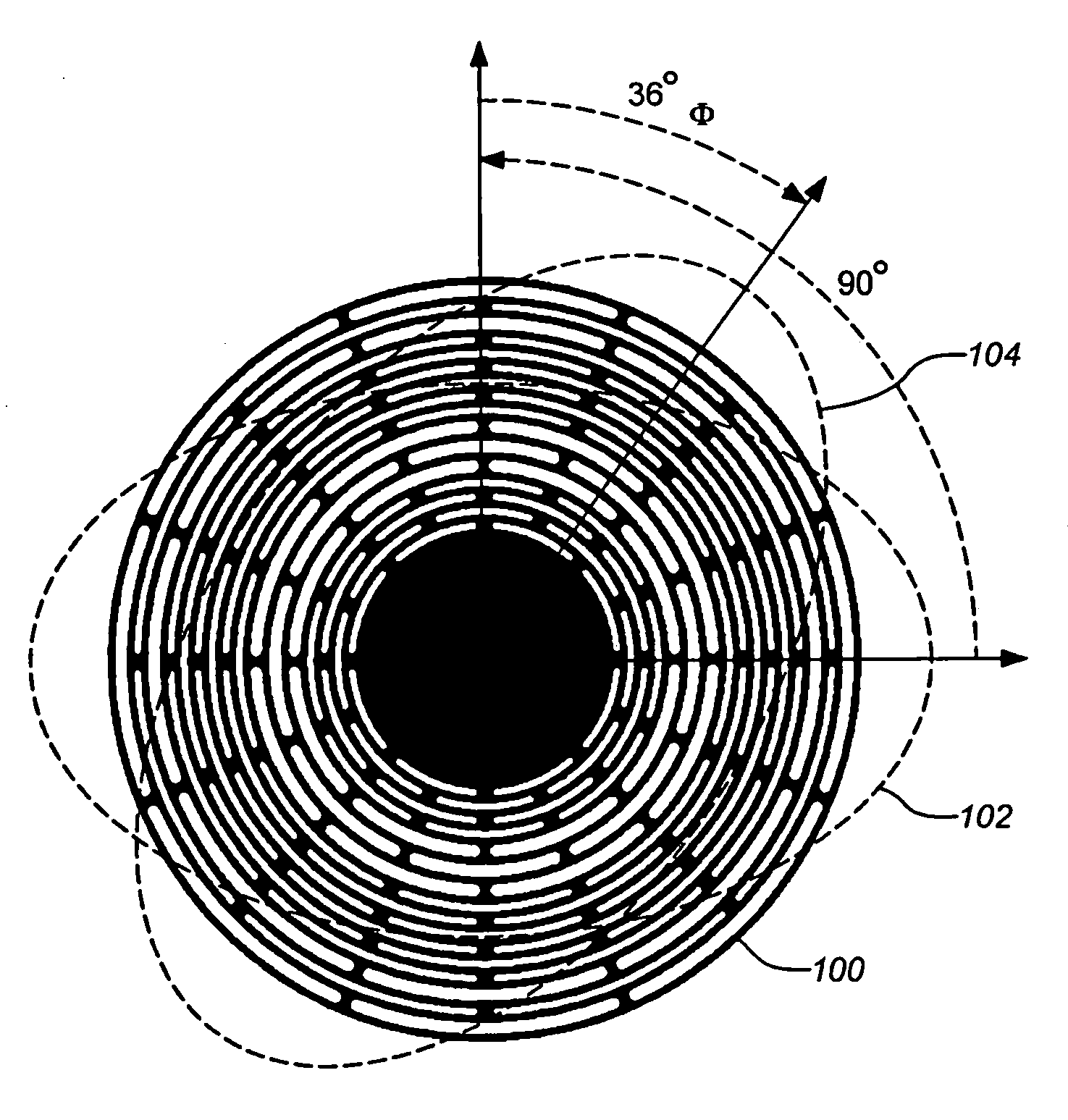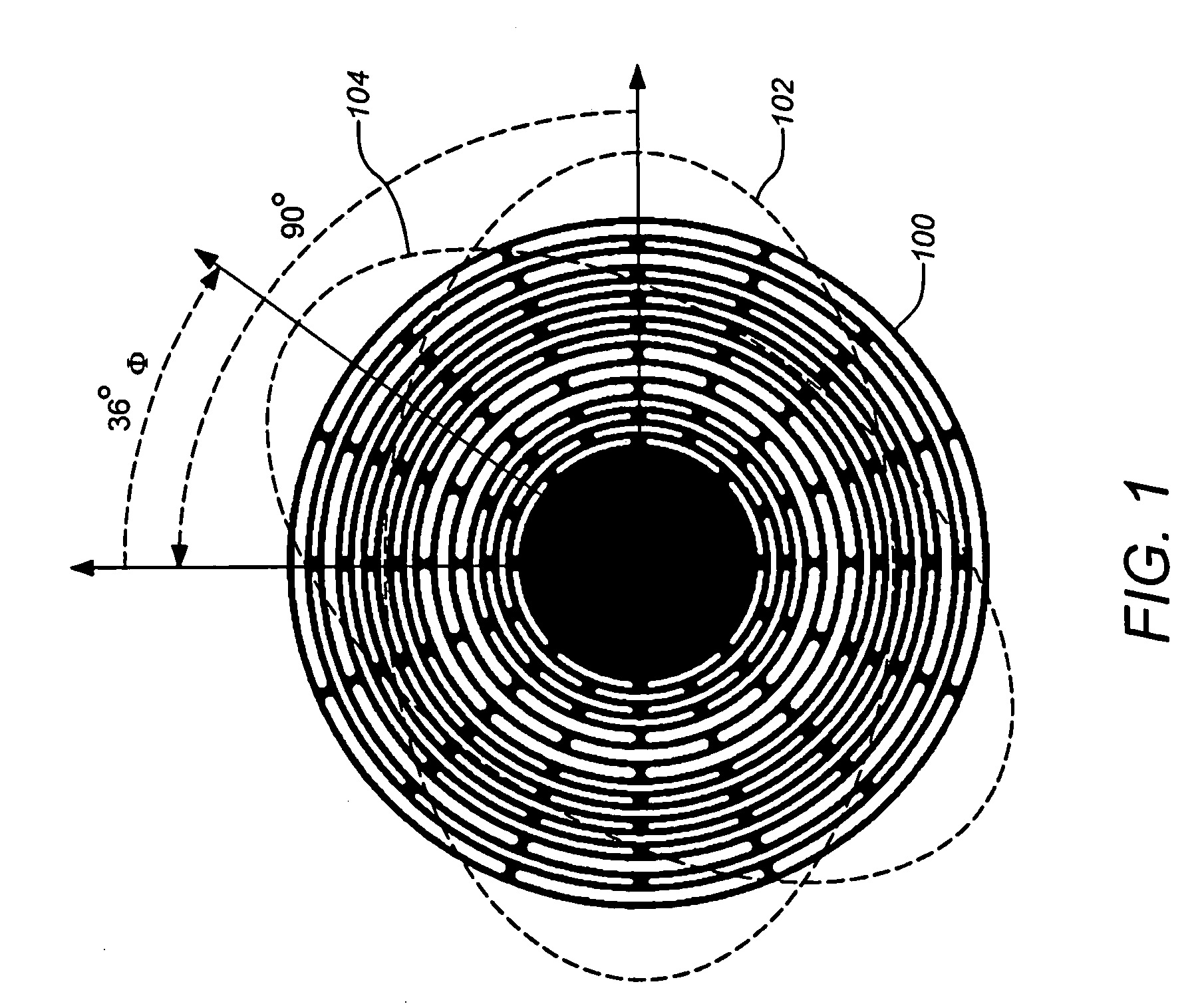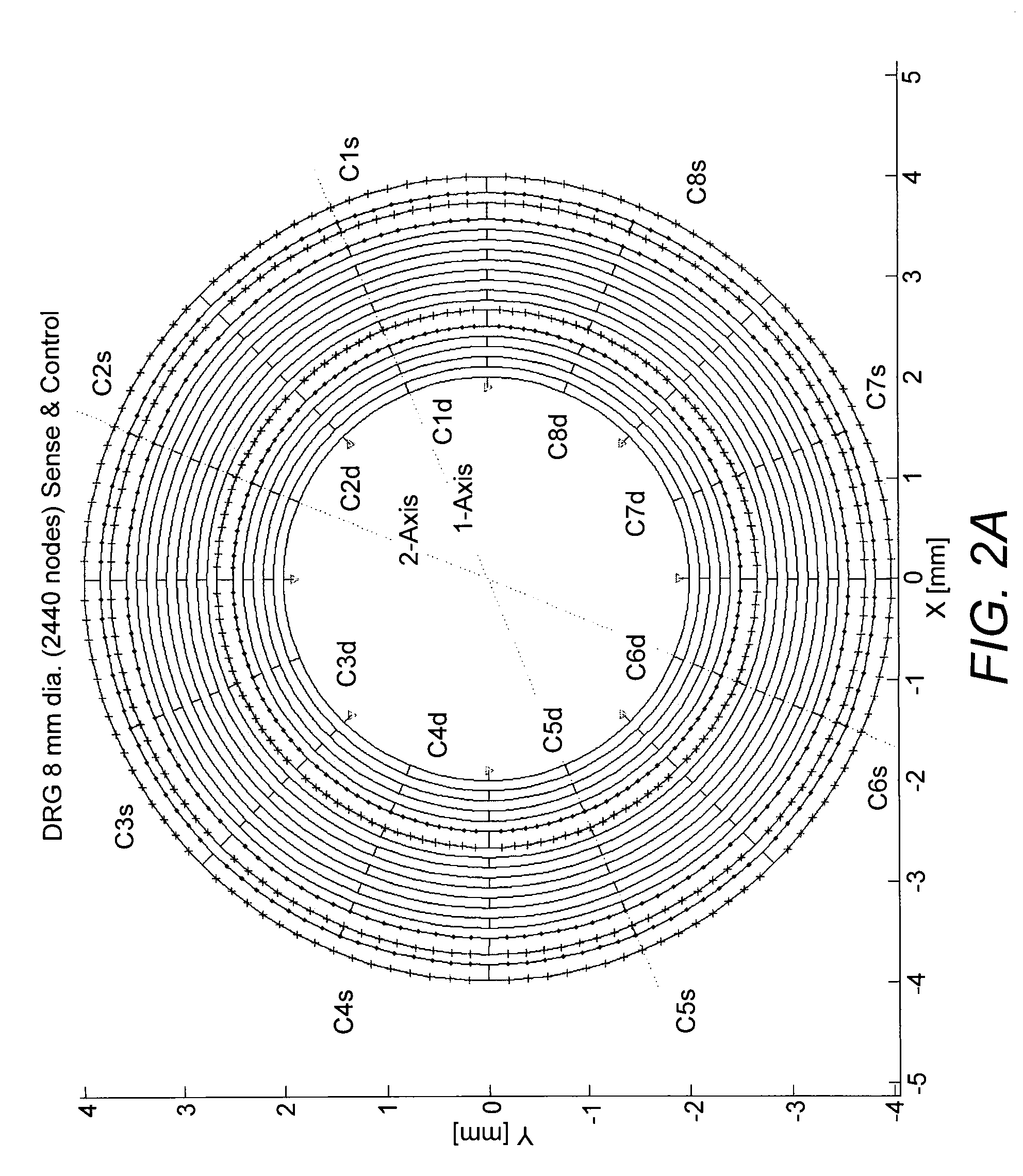Systematic disc resonator gyroscope tuning
a disc resonator and gyroscope technology, applied in the field of gyroscopes, can solve the problems large and heavy, and the mechanism of older conventional mechanical gyroscopes is very heavy, and achieves the effects of large and heavy, high cost, and high accuracy
- Summary
- Abstract
- Description
- Claims
- Application Information
AI Technical Summary
Benefits of technology
Problems solved by technology
Method used
Image
Examples
Embodiment Construction
[0038]1. Overview
[0039]A systematic method for frequency tuning a disc resonator gyroscope (DRG) in a single step is provided. One or two transfer functions may be analyzed to fully determine the needed sin(4θ) and cos(4θ) asymmetry correction components. One or two of the four groups of four electrostatic bias electrodes or four groups of four laser trimming locations are utilized to correct all the sin(4θ) and cos(4θ) asymmetry components which can give rise to mistuning of the DRG.
[0040]This technique avoids previous laborious or time consuming multi-step trial and error or computerized search methods such as simulated annealing. From the residues of device transfer functions the frequency split, Δf, and orientation, θo, of the Coriolis modes and the fourth Fourier component of asymmetry is systematically determined using relations based on analysis of the finite element model equations. The required cos(4θ) and sin(4θ) asymmetry correction components a4=−Δf cos(4θ0) and b4=−Δf s...
PUM
 Login to View More
Login to View More Abstract
Description
Claims
Application Information
 Login to View More
Login to View More - R&D
- Intellectual Property
- Life Sciences
- Materials
- Tech Scout
- Unparalleled Data Quality
- Higher Quality Content
- 60% Fewer Hallucinations
Browse by: Latest US Patents, China's latest patents, Technical Efficacy Thesaurus, Application Domain, Technology Topic, Popular Technical Reports.
© 2025 PatSnap. All rights reserved.Legal|Privacy policy|Modern Slavery Act Transparency Statement|Sitemap|About US| Contact US: help@patsnap.com



